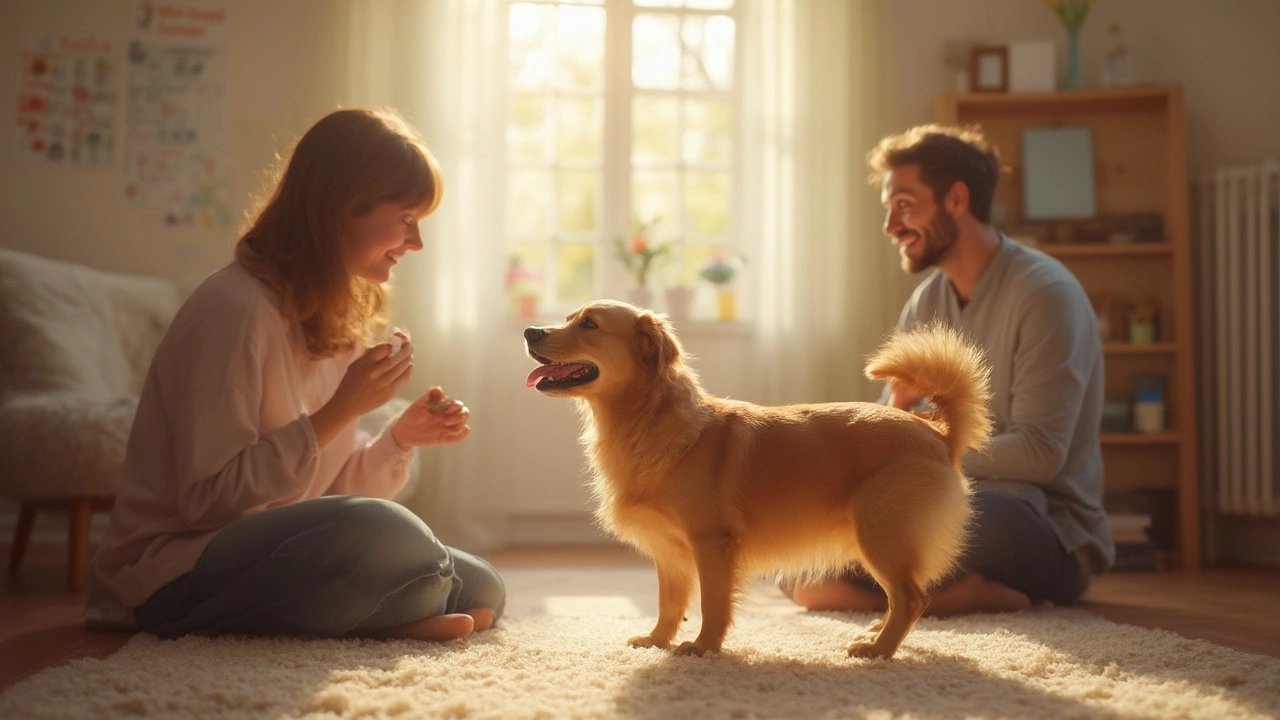Does your dog sound like it’s auditioning for a part in a canine opera? Or maybe your neighbors are quietly plotting revenge because your pup’s barking wakes their baby every morning. Whatever the scenario, you know something has to give. Bark collars promise a quick fix, but many dog lovers cringe at the thought of shocks, sprays, or harsh corrections. Good news—you don’t need those to help your dog learn to be comfortably quiet. Let’s dive into the world of softer, smarter solutions for that noisy friend of yours.
Why Do Dogs Bark? Understanding the Real Root of the Problem
First, let’s set something straight: barking comes naturally to dogs. Some breeds, like Beagles and Terriers, are natural chatterboxes—genetically programmed for big voices. But barking isn’t some random canine habit. It’s your dog’s way of saying something’s up. The trick is understanding what and why, which often gets overlooked in the rush to hush.
Boredom tops the list for many home-alone dogs. A 2023 study from Cornell’s vet college found dogs left alone for more than five hours were twice as likely to bark excessively. Attention-seeking is another biggie, especially in puppies. Separation anxiety leads to frantic, persistent yapping the minute you step out. Some pooches bark when they’re scared, like during thunderstorms or when the dreaded vacuum comes out. Others do it to sound the alarm—a stranger at the door, a squirrel on the fence, or even a suspicious-looking garden hose.
Thinking about the “why” is honestly the best starting point. Is your dog barking when you leave? That’s probably anxiety. Is it at passersby? Maybe it’s a bit of guarding. Are they just bored out of their furry skull? You get the idea. Figuring this out helps you pick the right, gentle approach to quiet things down. And trust me, it’s way more effective than just zapping them without a clue what’s driving all the noise.
Why Bark Collars Backfire – And the Risks You Don’t Want
It’s tempting to grab a bark collar from the pet store shelf. They’re marketed as simple solutions—put it on, problem solved. But pause before you drop that card at checkout. Studies and trainers agree: bark collars often trade one problem for several worse. Let’s break down exactly why these gadgets can do more harm than good.
Bark collars work by delivering a static shock, a blast of citronella, or a sudden noise every time your dog barks. On paper, it sounds fair. In reality, it rarely pinpoints the cause. Your dog might be in distress, hungry, or just excited to see you—and gets punished for normal communication.
Research from the University of Lincoln in the UK found that dogs wearing electronic collars showed higher signs of stress, anxiety, and even aggression. Their bark collar studies reported increased tail tucking, ears pinned back, and sometimes withdrawal from their favorite people—not exactly the harmony you’re hoping for at home.
There’s also the “collateral damage” problem. Bark collars can’t tell good bark from bad. So, dogs might suppress barking, but not anxiety; in fact, their underlying problem can get much worse. Some sensitive pups become fearful of anything around when the collar delivers a zap, leading to trust issues and odd phobias. And then you’ve got the risk of malfunction—collars that shock out of the blue, leaving your pup totally confused.
Here’s a small table comparing bark collars with common problems and alternative solutions:
| Problem | Bark Collar Result | Alternative Approach |
|---|---|---|
| Separation Anxiety | Suppresses barking, increases anxiety | Behavioral training, calming aids, routine changes |
| Territorial Barking | Might punish but causes confusion | Positive reinforcement training, visual barriers |
| Boredom | Barks suppressed but dog under-stimulated | Enrichment toys, interactive play |
| Noise Sensitivity | Unpredictable corrections | Desensitization, counterconditioning |
Dogs aren’t robots—they need to know what we expect and why. Bark collars skip the explanation and can create fresh problems, emotionally and behaviorally. You deserve better options. Your dog does, too.

Humane Alternatives: What Actually Works to Stop Dog Barking?
Ready for the good stuff? There’s a whole toolkit of gentle, proven methods for managing that noise—no shocks or sprays required. Here’s how to get real, lasting results (and maybe a little peace and quiet).
what can I use instead of a bark collar? Start by identifying triggers. Is it outside noises? Delivery drivers? Loneliness? Once you know, you can tackle the source, not just the symptom. Here are top alternatives pet trainers swear by:
- Positive Reinforcement Training: Reward silence, not barking. Catch those quiet moments and treat or praise lavishly. Consistency is key—set a “quiet” cue and reinforce it with every success.
- Distraction & Redirection: If your dog barks when bored, stuff a Kong with treats, set up a snuffle mat, or rotate toys. Redirection works best when the trigger happens—like giving a toy when the mail arrives.
- Desensitization for Triggers: If noises or strangers set off barking, try slow exposure with positive rewards. For example, play recordings of doorbells at low volume and treat for staying calm, increasing slowly over days or weeks.
- Environmental Management: Block the view with frosted window film or set up baby gates to keep dogs away from the front door. White noise machines can mask those random outside sounds.
- Increase Exercise and Mental Enrichment: Tired dogs bark less. Daily walks, sniffing sessions, or “find the treat” games can lower that urge to vocalize.
- Professional Help: Certified trainers or veterinary behaviorists will personalize strategies and ensure you aren’t flying solo. This especially helps in tough cases or if anxiety is part of the picture.
- Calming Products and Supplements: Some dogs respond to pheromone diffusers, calming chews, or anxiety wraps like Thundershirts. Check with your vet for safe options—especially if you’re considering supplements.
- Routine and Predictability: Dogs thrive on knowing when food, walks, and rest happen. A structured day can seriously reduce barking triggered by confusion or uncertainty.
Little tweaks go a long way. Cornell’s 2024 Enrichment Study saw a 35% drop in “problem barking” just by adding two extra daily brain games for shelter dogs. No gadgets, no punishment—just more fun. You can get these results at home, often within a couple of weeks.
Real-Life Success Stories and Mistakes to Avoid
Here’s where it gets real. Meet Tilly, the Labradoodle from Oregon. Her family almost gave up after three different bark collars failed and made her skittish. They teamed up with a local positive trainer, swapped bark collars for treat-based quiet cues, and started daily scent work games. Three months later, Tilly’s peace-loving ways returned—and so did the neighbors’ smiles.
Or Max, the rescue pup who barked at literally everything outside the window. Blackout curtains, white noise, and an extra walk after lunch turned things around. Once his people realized he was just craving things to do, Max’s “alarm barks” dropped by almost 80%.
Not every attempt is perfect, so here’s what to avoid:
- Don’t punish barking after it happens—it rarely connects the correction to the cause. Dogs just get nervous or sneaky about barking when you’re not looking.
- Skimping on exercise or mental enrichment makes boredom worse. Walks aren’t just for toilet breaks—they’re essential dog therapy.
- Don’t expect instant magic. Changing habits (yours, as well as your dog’s) takes time, patience, and silly amounts of hot dog treats.
- If barking seems nonstop, especially when alone, check for anxiety or medical problems. Chronic barking can be a red flag for deeper issues needing your vet’s advice.
Want another cool trick? Keep a mini journal. Track when barking happens, what triggered it, and what you tried. It helps you connect dots and spot hidden patterns. Sometimes the most random discovery—a mail carrier at 2 p.m.?—solves a weeklong mystery.
The bottom line—dogs talk for real reasons, and they’re desperate for us to listen. When you ditch bark collars and focus on empathy and training, not only do you get a calmer house, but your bond gets stronger than any electronic device can promise.
